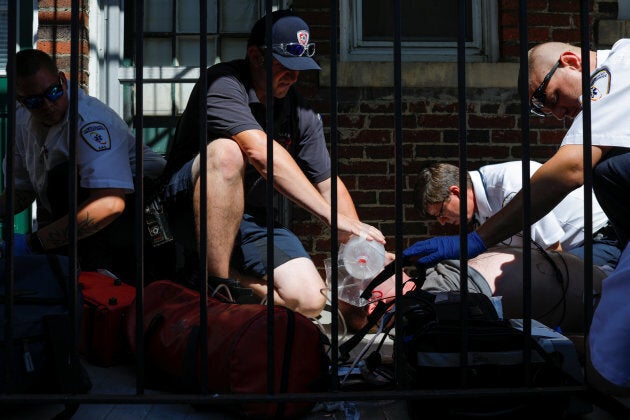According to the Canadian Institute of Health Information (CIHI), the rate of opioid poisoning hospitalizations has been steadily on the rise with approximately 13 Canadians a day hospitalized for an opioid overdose in 2014-2015.
What began with the over-prescription of opioids such as OxyContin, a painkiller previously thought to have a low potential for addiction, led first to the diversion of legal drugs to the illegal market, and later, to the dramatic expansion of the illegal production of fentanyl.
As the horror stories of addiction and death have multiplied, it is clear that what was once a medical issue is now a population health crisis.

To date, we have had little success in dealing with this crisis because we continue to focus on it in terms that fail to understand it as something other than a problem with illegal drugs. Seizing fentanyl shipments as they arrive in Canada has done little to interrupt the supply on the street. Current harm reduction methods, while moderately effective, still operate within a framework that places the illegality of the drug at the centre of our understanding of the issue.
We supply police and other first responders with the opioid antidote Naloxone, and ask it be used to keep the addict/offender alive so that they can, in all likelihood, be processed into the criminal justice system. Supervised consumption sites continue to rely on the police to "turn a blind-eye" to those entering or leaving the facility likely in possession of illegal drugs. The success of both Ottawa and Toronto's "pop-up" safe-use sites in city parks came entirely from the willingness of the police to pretend they are not not there.
We need to see addiction as a health issue, not a criminal issue.
As a first step, this is fine. But it is not a long-term solution.
Situating our harm reduction activities within a criminal justice framework puts the focus on those populations already more likely to interact with the criminal justice system: poor and racialized groups, especiallyIndigenous peoples.
Harm reduction's success requires police to let "criminal activity," such as possession of narcotics, slide in certain areas and at certain times in order for people not to die.
We need to see addiction as, first, a health issue, not a criminal issue — and, second, as a health issue that primarily preys on those sub-populations that are already economically or socially marginalized.
Decades of a "war on drugs" has done nothing to reduce the supply or the demand for substances that, to some extent, are arbitrarily deemed illegal. We learned this lesson quickly with the failed prohibitions of alcohol and, increasingly, we seem to be coming to terms with it with marijuana. And we know we can "de-normalize" harmful substances because we have done it with tobacco.
In 2001, Portugal decriminalized possession of all drugs in amounts deemed for personal use. Drug use and addiction (not the same thing) are a public health issue, it asserted, not a criminal matter. This freed up resources on the criminal justice side to focus on more important criminal activity. It also allowed harm reduction methods to integrate preventative messaging more effectively.
Portugal now averages three overdose deaths per one million people every year. The European Union average is 17.3, and the United Kingdom average is 44.6. Canada has had at least 2458 opioid related deaths in the last year.
However squeamish it might make us feel, however much we want to cling to the notion that "drugs are bad," and "just say no," it is time that we try something new. The criminal justice system is not the place to deal with addiction. It is a social and economic problem that requires more than a patchwork of public health interventions and treatment services based on local advocacy efforts.
More from HuffPost Canada:
- Canada's New Opioid Prescribing Guidelines Are Causing Patients More Pain
- Poor Health Care Planning Is Fueling The Opioid Epidemic
- It's Time For Ottawa To Listen To The Evidence About Opioid Use
With the scale of this opioid crisis reaching the middle class and young recreational drug users, many are being missed. Naloxone peer distribution programs aimed at street-entrenched chronic drug users are unlikely to reach suburban neighbourhoods. Strategies to reduce harms of drug use without criminalizing it first need to be embedded within a wider health and social policy reform.
We recognize that this is calling for a major policy shift in how we discuss addiction. But as the fentanyl deaths continue to claim more and more lives, we cannot continue to pretend that we are on the path to solving this problem when every indicator says otherwise. The evidence is strong. It is our mindset that needs changing.
Follow HuffPost Canada Blogs on Facebook
Also on HuffPost: